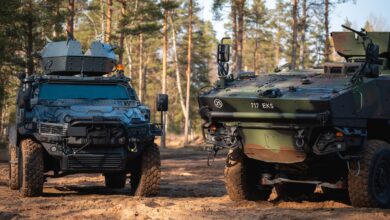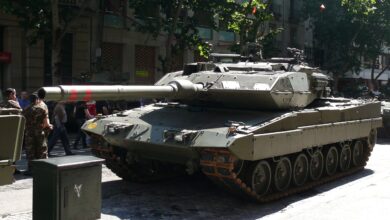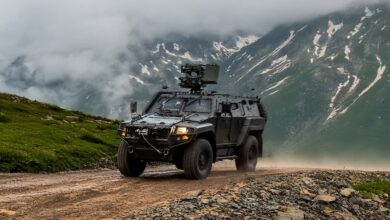Russian BT-3F Amphibious Combat Vehicle in Final Trial Stage
Russian state-owned industrial conglomerate Rostec has announced that the country’s new BT-3F amphibious armored personnel carrier is now in its final stage of preliminary trials.
According to a report by TASS News Agency, the cutting-edge combat vehicle is approaching the end of trials, scheduled to last another 12 months.
Rostec stated that the BT-3F underwent firing tests to demonstrate its resistance to external impacts, including those caused by conventional armaments. Its amphibious capabilities have also been sea tested.
The developer is preparing for the vehicle’s serial production, which will begin after trials and a contract with the Russian military is signed.
The BT-3F Armored Personnel Carrier
Developed by Kurganmashzavod, the BT-3F amphibious armored personnel carrier is designed to transport up to 17 marine infantry personnel and provide fire support in combat operations.
It weighs more than 18 tons (16,329 kilograms) with armor for complete protection against large-caliber machine guns.
Derived from the BMP-3 infantry fighting vehicle, the amphibious combat vehicle features energy-absorbing chairs that significantly reduce shock from explosions or driving on rough terrain.
The BT-3F is mounted with a 12.7-millimeter machine gun and has a tele-thermal imaging sight with a laser rangefinder for terrain monitoring and aiming.
New Combat Vehicles
In 2021, Russian Industry and Trade Minister Denis Manturov announced that the country would begin mass production of T-14 Armata tanks this year.
The tank has “robotized” functions, with artificial intelligence handling loading, targeting, and firing capabilities. It also has an unmanned turret with a 125-millimeter smoothbore gun.
The Russian Army has also received its first batch of nine “Terminator” tank support combat vehicles equipped with the Ataka supersonic anti-tank missile system and two 30-millimeter guns.
The armored vehicle is also reportedly designed to protect army personnel from radiation caused by a nuclear blast and can operate in diverse climatic and geographical conditions.












